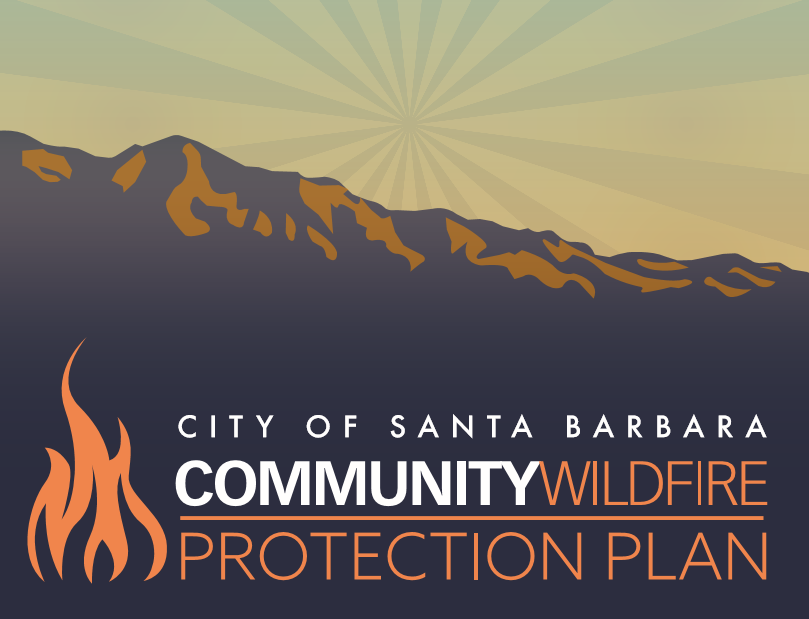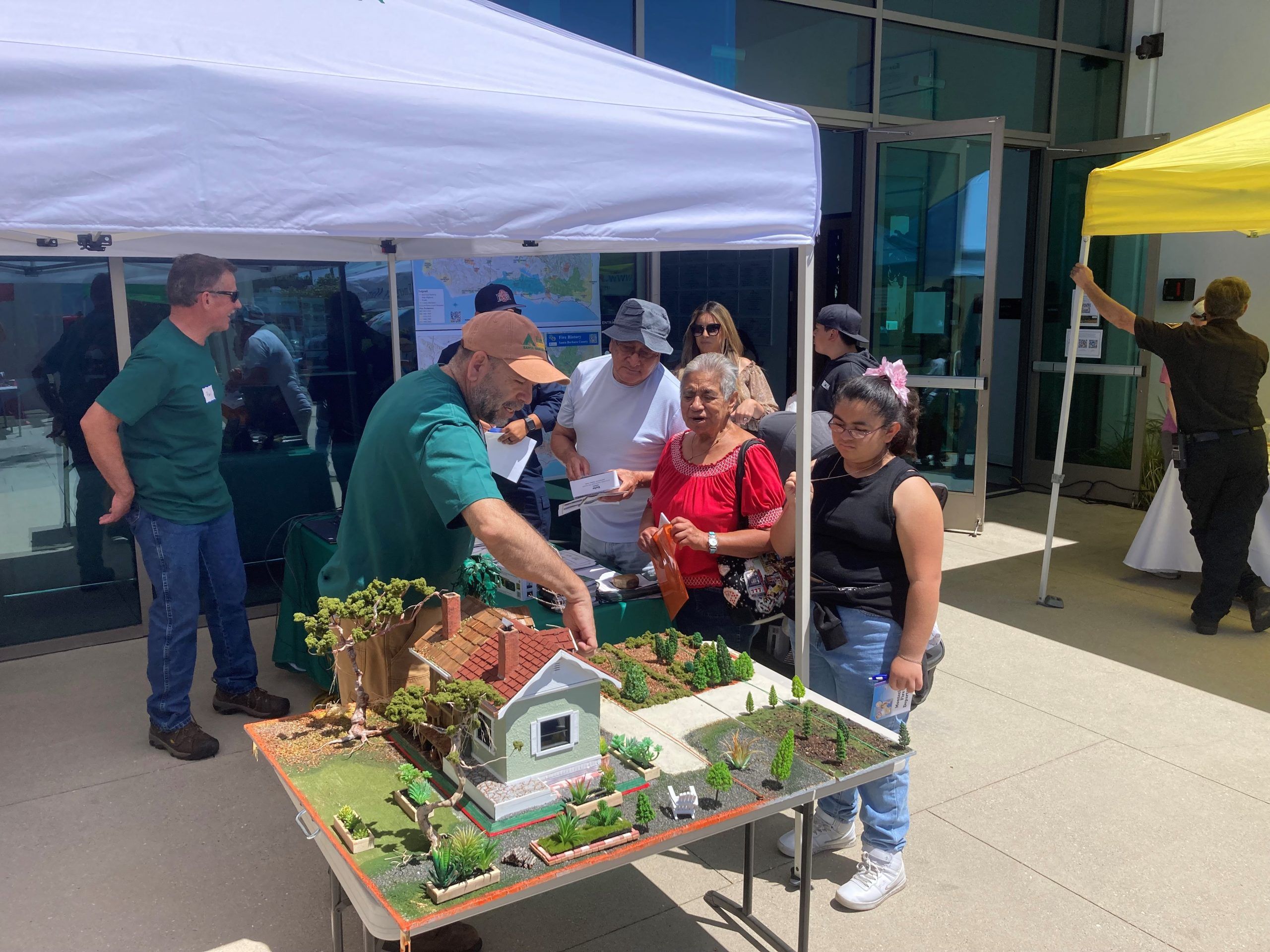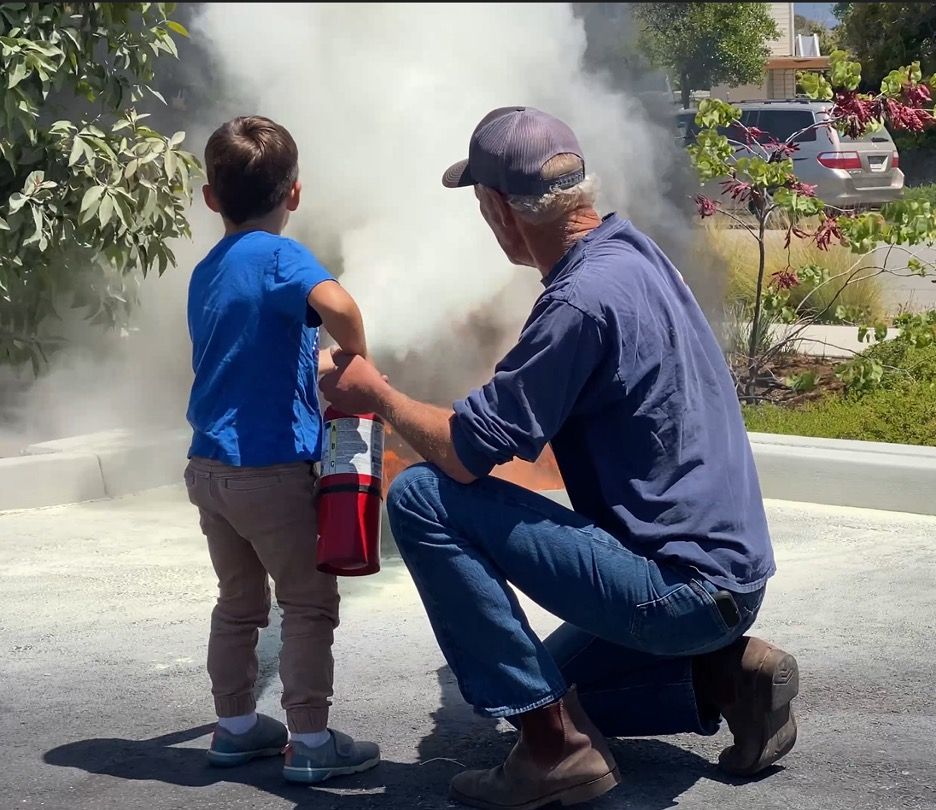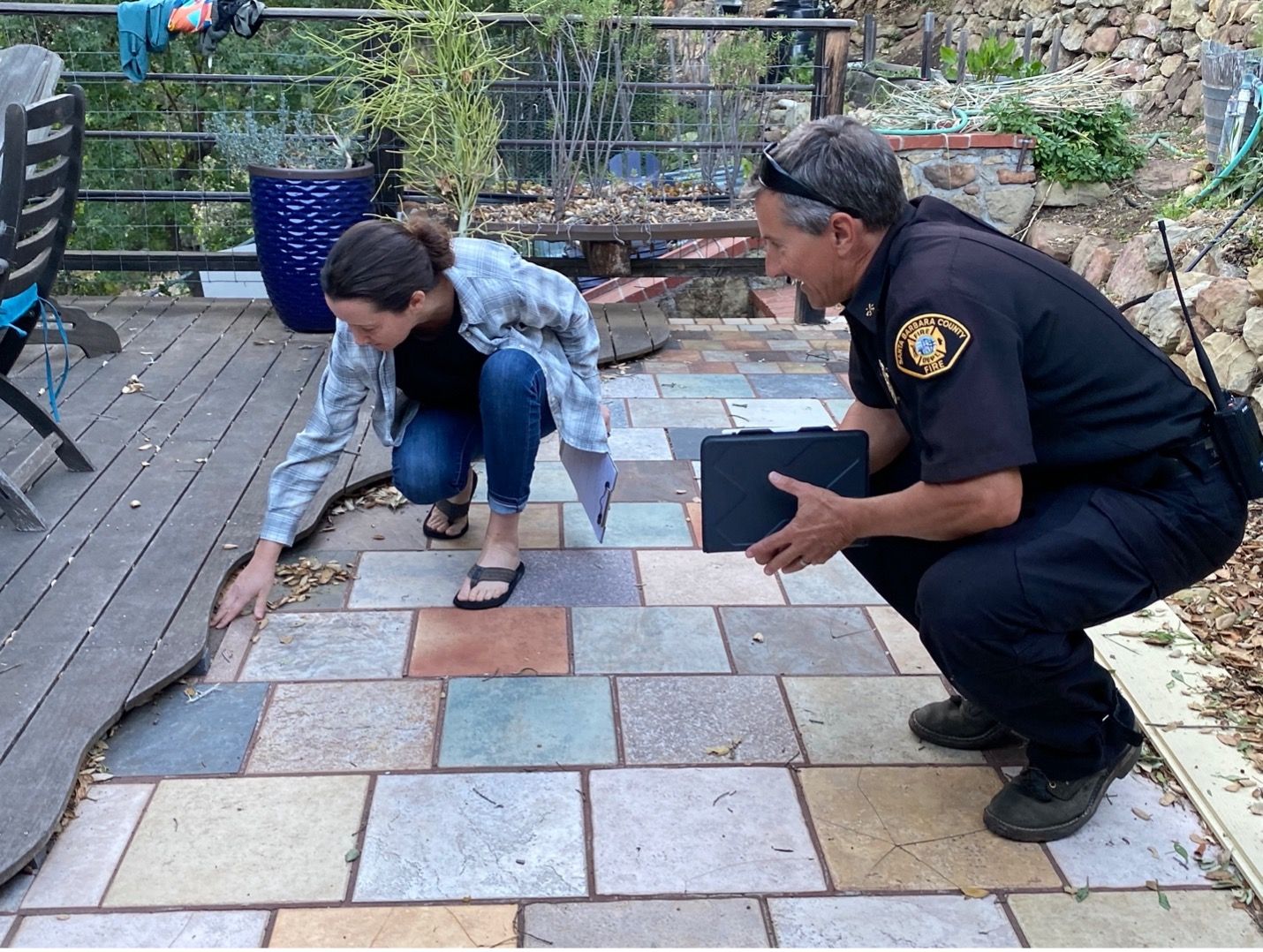
Enter the Santa Barbara County Fire Safe Council
That’s where the Santa Barbara County Fire Safe Council (SBCFSC) comes in. The nonprofit organization has a wildfire protection plan, and its mission is to promote wildfire safety in Santa Barbara County through education and action.
They offer free home hardening assessments, fire preparedness workshops, and more, all designed to help homeowners in Santa Barbara County mitigate the risks associated with wildfires and create a safer environment for their families and communities.
Free Home Hardening Evaluations
Home hardening is a vital strategy in home wildfire protection. It involves making specific upgrades to your home and its surroundings to prevent embers from igniting your structure and to limit the spread of fire. CalFire and insurance companies alike recommend home hardening as one of the most effective ways to protect your home and reduce the impact of wildfires in your neighborhood.
During the SBCFSC assessment, an expert evaluator will visit your property, assess its current level of wildfire preparedness, and offer tailored recommendations to improve defensible space and home hardening. Evaluators will also help you review evacuation plans to ensure you and your family are prepared if disaster strikes.
Evaluations can last approximately 45 minutes. Follow this link to request your home hardening evaluation.

Free Workshops
In addition to home hardening assessments, SBCFSC holds free educational workshops to help homeowners understand how to implement home hardening strategies. At these workshops, experts from the Fire Safe Council guide homeowners like you through critical steps they can take to protect their property from wildfires. Topics include:
- Home Hardening: Learn about the most effective materials and techniques to protect your home, including fire-resistant roofing, vents, windows, and siding.
- Defensible Space: Understand how to create a defensible space around your property to slow the spread of fire.
- Fire-Resistant Landscaping: Discover how to choose plants and manage vegetation in ways that reduce fire risk.
- Evacuation Plans: Ensure that you and your family are well-prepared for a quick and safe evacuation if necessary.

Fostering Education and Encouraging Dialogue
The Fire Safe Council holds monthly meetings via Zoom, with expert presentations scheduled during alternating sessions. These presentations cover a range of important topics related to home wildfire protection, including fire ecology, fire behavior, vegetation management, habitat restoration, infrastructure upgrades, weather services, and emergency preparedness. The purpose of these meetings is to share valuable information with residents and provide a forum where community members can actively contribute to addressing the challenges that wildfires present to our urban-wildland interface.

Quick Tips for Fire Preparedness
While you're waiting for your assessment or workshop, here are a few immediate steps you can take to harden your home against wildfire:
Finally, ensure all combustible materials are located 30 feet from your home.
- Use composition, metal, clay, or tile materials for roofing, and ensure there are no spaces where embers can enter.
- Install metal mesh over vents to prevent embers from entering your home.
- Install dual-paned windows to help reduce the impact of radiant heat and ember exposure.
- Consider fire-resistant materials for walls such as stucco, fiber cement, or fire-retardant treated wood for exterior walls.
- Keep your roof, gutters, and windows clear of debris. This is one of the simplest yet most effective ways to reduce fire risk.
- Maintain at least 100 feet of defensible space around your home, clearing grass, shrubs, and trees to reduce fire risk.
- Use or install fire ignition-resistant materials around your home.
- Build or re-roof with composition, metal, clay, or tile materials. Block any spaces between the roof decking and covering to prevent embers from catching.
- Cover all vent openings with metal mesh, avoiding fiberglass or plastic that can burn.
- Have dual-paned windows installed.
- Install window screens to increase ember resistance and decrease radiant heat exposure.
- Build or remodel your walls with ignition-resistant materials. Think stucco, fiber cement wall siding, fire retardant, treated wood, or other approved materials.
- Make sure your fireplace flue is closed, especially during fire season.
- Weather stripping around your garage door will prevent embers from blowing in.
- Inspect the home for dry rot, gaps, or cracks. Caulk gaps greater than 1/8-inch.
- Cut or mow all grass down to a maximum height of four inches.
Resources like the Wildfire Home Retrofit Guide: How to Harden Homes Against Wildfire give a clear, detailed overview of the fundamentals of hardening your home against wildfire. And by hardening your home, you may be entitled to save money on insurance.
If you’re ready to protect your home and your family from the threat of wildfires, I highly encourage you to get in touch with the Fire Safe Council. By hardening your home and taking proactive measures, you can significantly reduce the risk of damage and loss in the event of a wildfire.
Ready to take home wildfire protection seriously? I know I am. Meanwhile, if you're considering moving within or to Santa Barbara, I invite you to call me at (805) 886-9378 or email me at Cristal@montecito-estate.com for a free consultation regarding selling and buying. Stay safe, and let’s work together to protect our homes and our community.
Of Related Interest:
- Spotlight on the Montecito Community Foundation
- Santa Barbara Museum of Art’s Ridley-tree Education Center
- Santa Barbara Wildlife Care Network: Creating a Peaceful Co-existence